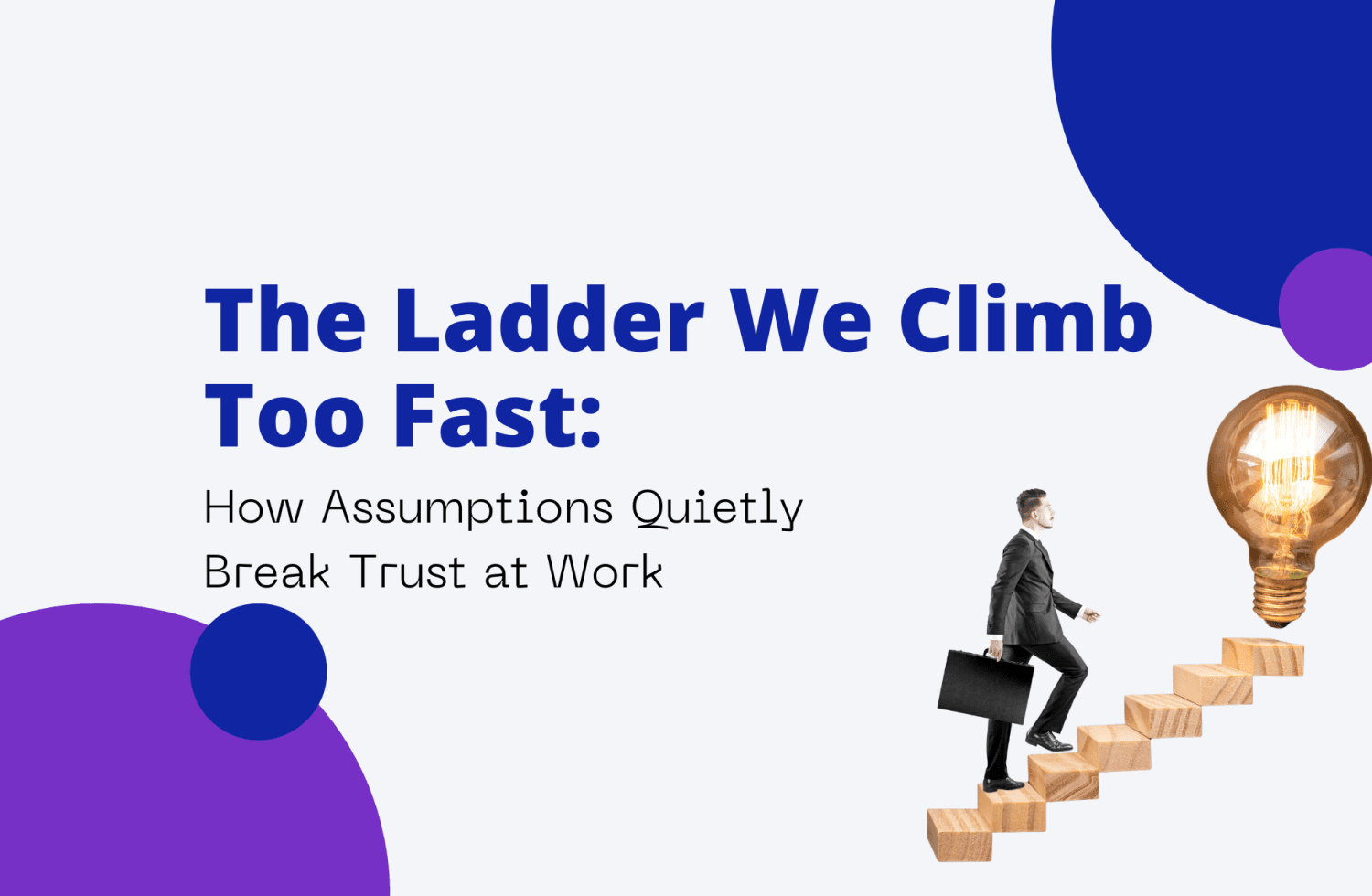Click Here to Download Today's PDF.
When most people hear the word "accountability," they brace themselves.
It sounds like pressure. It sounds like punishment.
It sounds like someone’s about to get called out for something they forgot to do or didn’t do well enough.
I get it. I've felt that same tension.
For years, accountability had that edge for me too.
It was the part of leadership I didn’t always look forward to—the moment where you have to confront what didn’t happen, have a tough conversation, or draw a line someone may not like.
It’s uncomfortable.
And for many leaders I’ve worked with, it’s the one thing they admit to avoiding until it’s too late.
But over time, after walking with dozens of teams through the chaos of missed deadlines, low morale, and finger-pointing spirals, something became very clear: accountability isn’t what we think it is.
It’s not control. It’s not confrontation. And it’s definitely not micromanagement.
Accountability—real accountability—is a form of care.
It’s structure. It’s consistency.
It’s a promise to show up, keep your word, and hold the line—not out of pressure, but out of respect for the people you lead.
And once I started treating it that way, everything changed.
Why Teams Actually Lose Accountability (and Why It’s Rarely About Effort)
I’ve been in rooms where incredibly smart, well-meaning people have dropped the ball over and over again.
It’s not because they didn’t try.
It’s because they didn’t know what was expected—or didn’t believe anyone would actually follow up.
That’s the silent killer of performance: not laziness, but vagueness.
When expectations are unclear and follow-up is inconsistent, even the best people start second-guessing their role.
They start wondering:
- “Is this really my responsibility?”
- “Do they even care if this gets done?”
- “Should I wait for someone else to take the lead?”
The result?
- Roles get blurred.
- Trust starts to break down.
- Motivation quietly drains.
- Progress slows until it stops altogether.
- People start to check out—not because they’re bad employees, but because clarity disappeared.
This is what I’ve seen time and time again, especially on teams with high talent but low structure.
It’s easy to confuse harmony with health, but when no one’s keeping track, small issues slip through cracks and quietly grow into big ones.
And then one day, someone says out loud what everyone has been thinking: “This isn’t working anymore.”
That moment always feels like a failure. But it doesn’t have to be.
Because when you look closely, you can almost always trace it back to a simple breakdown in accountability.
Accountability Isn't Calling People Out. It's Calling Them Up.
I’ve seen leaders avoid accountability conversations because they’re afraid they’ll come off as too intense—or worse, unfair.
And I get that. No one wants to be the person constantly checking up on others or asking the hard questions.
But holding someone accountable doesn’t mean standing over their shoulder.
It means standing beside them and saying, “We both agreed this matters—so let’s get it done.”
When I changed how I approached accountability—when I stopped seeing it as something I “had” to do and started treating it as an act of respect and partnership—people responded differently.
They didn’t pull away. They leaned in.
That’s when I learned this truth:
Accountability isn’t about pressure.
It’s about clarity, care, and commitment.
And when people feel those three things, they step up—not because they’re afraid of what will happen if they don’t, but because they know they’re not doing it alone.
The 5-Part Accountability Process That Changed Everything
I didn’t learn this from a book. I learned it from solving real issues with real teams.
And I’ve boiled it down into five repeatable, practical steps that any leader can start using today.
- Set Clear Standards
- This is where everything begins. Be specific. Don’t just say “make the report better.” Say what you mean: “Condense this into a 3-slide summary that clearly shows the three biggest customer complaints, with one proposed fix per slide.”
The more concrete your standard, the less confusion down the road.
If it’s still open to interpretation, it’s not clear enough yet.
- Agree on Commitments
- You can assign work. But until someone confirms and claims it, there’s no accountability.
I’ve started using a simple rule: no commitment counts until the person says it back in their own words.
It sounds small, but hearing someone say “I’ll have the draft to you by Thursday morning” makes a world of difference.
Now we both know it’s real.
- Check In Consistently
- This one changed the most for me. I used to think follow-up meant I didn’t trust people. Now I see it as a way to stay connected and reduce stress—for them and for me.
I help teams use a 15-minute “progress pulse” every Monday.
We ask: What’s on track? What’s behind? What’s blocked?
That’s it. No judgment. Just alignment.
- Talk About Gaps Early
- Accountability doesn’t mean perfection. People will drop things. Circumstances will shift. Priorities will compete.
What matters is how early we talk about what’s off—and whether we can do it without assigning blame.
I once had a teammate say, “I didn’t bring it up because I wasn’t sure if it was a big deal yet.”
That’s what happens when people don’t feel safe naming gaps.
Now we log them, review them, and treat them like normal parts of the process.
- Follow Through
- This is the part most leaders forget. If you don’t revisit what you asked for, the message is clear: it didn’t matter.
I’ve learned to circle back on every single commitment—especially the small ones.
Not to punish, but to close the loop. That’s how trust is built.
Because the moment you stop checking in, the standard silently lowers.
Real-Life Example: The Team That Wasn't Lazy—They Were Lost
Let me tell you about a team I worked with a few couple of years ago.
They were a fast-moving product team at a mid-sized tech company, and from the outside, everything looked great.
They were known for their innovation. They had strong values.
And their leadership deeply cared about people.
But they couldn’t ship anything on time.
Every cycle ended in delays, rework, and frustration.
The team was tired. Management was getting anxious.
And behind closed doors, the word “underperformance” was starting to creep in.
That’s when they brought me in.
I didn’t come in with answers—I came in with questions.
I sat in meetings. I watched how decisions were made.
And what I noticed was this:
- No one was clearly owning deliverables.
- Tasks were discussed but not documented.
- Deadlines were mentioned, but no one confirmed them.
- People were afraid to speak up about blockers.
- Leadership rarely followed up after meetings.
It wasn’t laziness. It wasn’t bad culture. It was a vacuum of accountability.
Here’s what we did:
- First, we mapped out their deliverables in plain language. Not just what needed to get done—but what “done” actually looked like.
- Then, we created a single shared doc where every task lived, along with a named owner and a deadline.
- We added a Monday check-in with three questions: What’s on track? What’s off? Where are you stuck?
- We built a team ritual of naming gaps early, in a no-blame zone.
- And we made sure every meeting ended with written, reviewed agreements.
Within three weeks, progress was visible.
Tension dropped. People felt supported.
And the team started finishing sprints on time for the first time in months.
All we did was take accountability seriously—and treat it like a system of trust, not a tool for pressure.
Three Powerful Resources That Go Deeper
Want to explore this more in your own leadership? These three resources have stood the test of time in my work:
- Book: The Oz Principle by Roger Connors, Tom Smith, and Craig Hickman — A deep dive into the mindset of ownership, and how accountability shapes culture from the inside out.
- Movie: Moneyball (Directed by Bennett Miller, starring Brad Pitt and Jonah Hill) — Not just a sports movie. It’s a brilliant look at leadership, standards, and the quiet power of building a team that follows through—even when no one else believes in the process.
- Tool: Team: Getting Things Done with Others by David Allen & Edward Lamont — A team-focused adaptation of the GTD method, filled with real frameworks you can apply instantly to make accountability feel more natural and less overwhelming.
What Accountability Really Taught Me
I used to think accountability was about pressure.
About performance.
About making sure people did what they were supposed to do.
But after working with so many teams, seeing the patterns, and being honest about my own mistakes, I’ve come to believe something much simpler—and much deeper:
Accountability isn’t pressure. It’s peace.
It’s what gives people room to breathe, focus, and act—without being chased.
It’s the thing that turns confusion into clarity.
The thing that turns silence into progress. The thing that turns a group of individuals into an actual team.
I’ve seen what happens when leaders take accountability seriously—not as a weapon, but as a way to care.
And every time I’ve done it well, I’ve seen people rise—not just in results, but in confidence and connection.
So if you’re leading right now—especially if it feels heavy—remember this: You don’t have to push harder. You just have to be clearer.
Say what matters. Follow through on what you say. And show up like it counts.
Because when people know where they’re going—and that you’ll be there with them— They stop protecting themselves.
They start showing up. And the whole team moves forward.
That’s what accountability gave me.
Not control. But connection.
And I wouldn’t trade it for anything.
Download the Infographic
Want a clear, visual version of everything we’ve just covered?
I’ve created a free, printable PDF infographic you can use as a reminder, share with your team, or bring into your next meeting.
Click here to download the Accountability Process PDF.
It’s the exact sheet I use when helping teams put this into practice—and now it’s yours.




